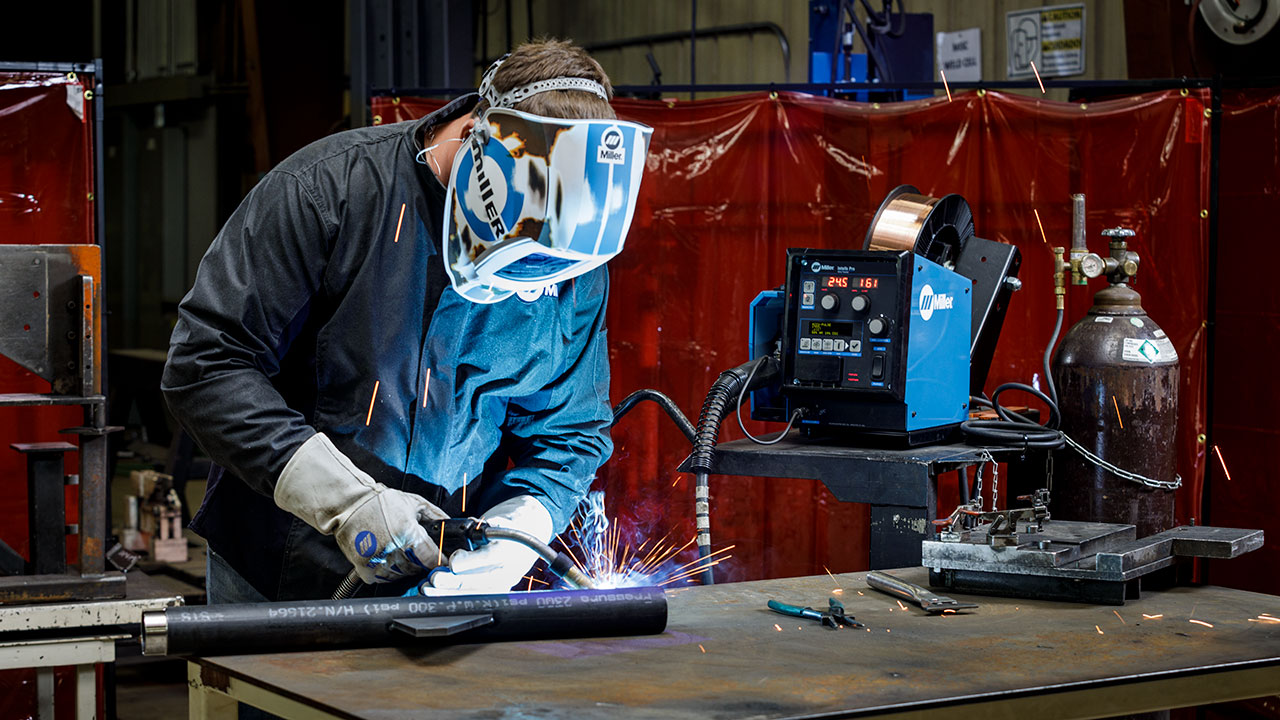Getting Welding Excellence: Unveiling the Tricks of WPS Application and Optimization
In the world of welding, attaining quality is a search that hinges on the careful application and optimization of Welding Procedure Requirements (WPS) By delving into the crucial elements, methods, challenges, and finest techniques connected with WPS, a globe of welding excellence awaits those who are ready to discover its midsts.
Relevance of WPS in Welding
The Significance of Welding Treatment Specifications (WPS) in the welding industry can not be overstated, acting as the backbone for making sure uniformity, high quality, and security in welding operations. A WPS provides comprehensive instructions on how welding is to be executed, consisting of important variables such as products, welding processes, joint design, filler steels, preheat and interpass temperature levels, welding currents, voltages, travel speeds, and more. By adhering to a distinct WPS, welders can maintain uniformity in their work, bring about constant weld high quality throughout different jobs.
Crucial Element of WPS
Reviewing the indispensable elements of a welding procedure requirements (WPS) is important for comprehending its duty in welding operations. One critical facet of a WPS is the welding process requirements, which outlines the certain welding procedures to be utilized, such as gas tungsten arc welding (GTAW) or protected steel arc welding (SMAW) By including these essential aspects into the WPS, welding procedures can be standardized, making sure top quality, effectiveness, and safety in welding operations.
Approaches for WPS Optimization

Second of all, training and credentials of welding personnel according to the particular needs of the WPS is critical. Giving comprehensive training programs and making sure that welders are licensed to implement procedures described in the WPS can result in better welds and lowered rework.
Additionally, leveraging technology such as welding software application and tracking systems can help in enhancing WPS. These devices can assist in tracking variables, guaranteeing specifications are within defined limitations, and supplying real-time feedback to welders, enabling them to make prompt adjustments for improved weld quality.
Common Difficulties and Solutions
Encountering barriers in executing the techniques for WPS optimization can impede welding procedures' effectiveness and high quality. One typical difficulty is poor training or understanding of the welding treatment requirements (WPS) amongst the welding group. This can bring about inappropriate implementation of welds, causing flaws and revamp. To resolve this, detailed training programs should be executed to ensure that all welders excel in analyzing and applying WPS accurately.
Another obstacle is the absence of appropriate documentation and record-keeping, check my reference which is essential for WPS optimization. Without clear documents of welding specifications, products used, and assessment results, it ends up being difficult to identify locations for enhancement and make sure consistency in welding procedures. Executing a robust documents system, such as digital welding administration software application, can help streamline record-keeping and promote data evaluation for constant renovation.
Furthermore, irregular welding devices calibration and upkeep can position a substantial difficulty to WPS optimization. Normal devices checks, calibration, and upkeep schedules should be complied with purely to ensure that welding specifications are accurately managed and kept within the defined tolerances (welding WPS). By dealing with these usual challenges with aggressive solutions, welding here are the findings procedures can boost efficiency, high quality, and total welding excellence
Best Practices for WPS Execution
To make certain effective WPS implementation in welding operations, adherence to market criteria and meticulous interest to detail are extremely important. When initiating WPS execution, it is essential to begin by completely recognizing the certain welding needs of the task. This requires a comprehensive review of the welding treatment specifications, products to be welded, and the ecological conditions in which the welding will certainly happen.
When the requirements are clear, the next action is to select the suitable welding procedure that lines up with these specs. This includes getting in touch with the appropriate codes and criteria, such as those given by the American Welding Society (AWS) or the International Organization for Standardization (ISO), to make sure compliance and top quality.
Moreover, recording the whole WPS implementation process is essential for traceability and quality assurance. Thorough records ought to be kept pertaining to welding criteria, product prep work, interpass and preheat temperatures, welding consumables utilized, and any deviations from the initial procedure. Regular audits and reviews of the WPS can aid determine areas for enhancement and ensure recurring optimization of the welding procedure.


Final Thought
Finally, the implementation and optimization of Welding Treatment Specs (WPS) is critical for achieving welding quality. By understanding the crucial elements of WPS, carrying out reliable strategies for optimization, addressing common difficulties, and adhering to ideal techniques, welders can guarantee high-quality welds and secure working conditions. It is vital for professionals in the welding sector to focus on the appropriate application of WPS to improve total welding performance and attain wanted outcomes.
The Significance of Welding Procedure Specifications (WPS) in the welding market can not be overemphasized, offering as the foundation for ensuring consistency, quality, and security in welding procedures. A WPS offers in-depth directions on exactly how welding is to be carried out, consisting of crucial variables such as products, welding processes, joint layout, filler steels, preheat and interpass temperatures, welding currents, voltages, travel rates, and more. One crucial aspect of a WPS is the welding process requirements, which describes the details welding procedures to be utilized, such as gas tungsten arc welding (GTAW) or protected steel arc welding (SMAW) By incorporating these essential elements into the WPS, welding treatments can be standard, click here for more info making certain high quality, efficiency, and security in welding operations.
It is imperative for professionals in the welding market to prioritize the appropriate implementation of WPS to enhance general welding efficiency and accomplish desired end results.